Rebecca McKinnon, author of Pearls Before Swine, a Clear Creek mystery, is visiting Ascroft, eh? today to tell us about her writing process.
Welcome, Rebecca. I’ll turn the floor over to you –
For every book I’ve written, the writing process has been different. But some things have been similar, or the same, for most of my books.
Over the years, the background sounds have changed. Where there used to be the sound of kids playing, now my kids are older. There might be the sound of teenage friends hanging out. Or there might be quiet. Or the sound of a clock. Or music (as long as there aren’t lyrics or the lyrics are in a language I can’t understand, and as long as it’s not classical music I’ve played a lot — otherwise my fingers try to play the viola part, and that doesn’t work so well when I’m trying to type).
I try not to snack when I’m writing, but I do keep a water bottle on my desk so I don’t forget to stay hydrated.
I don’t think I’ve ever written an entire book at my desk. I do have a desk, in a lovely office in my home. And I do write there. But I also write when I’m sprawled on the couch. Or one of my favorite places — in my car. When I’m waiting to pick up kids, I push the seat back so there’s room for the computer on my lap. Or I’ll climb into the backseat, then turn and lean against a (locked) door with my feet up on the seat, maybe with a pillow or blanket. I also adore writing at the park (when the weather is right). The key thing with writing in the car or at the park is that I don’t have a bunch of distractions. No dishes or laundry vying for my attention.
Another thing that has changed over the years is what I write — and how I write.
I’ve written in several genres: YA, steampunk, fantasy, time travel romance. But writing mysteries has been a very different experience than any of the others.
I used to be more of a pantser. I typically knew the beginning, the ending, and maybe a handful of key plot points for the book, and let my characters and imagination take it from there.
For a mystery, those landmarks aren’t enough. I have to plot. I have to know the “whodunnit,” the how, the why, who the suspects all are, why they’re suspects, how they get eliminated . . . and on and on. And you know what? I fought that. I really did. I was afraid it would take away the creativity, and the excitement of learning how the story unfolds.
I was wrong.
Not only was I wrong, but I’ve learned so much just by plotting! Now, I’m not going to say this same process would absolutely work for me with other types of books, but for a mystery? Give me my plot.
I still start with my beginning and ending, but now they’re more defined. Those key plot points? They’re still there. But there are way more of them.
So I organize them.
I might go a little overboard. For instance, I have small notecards. Each one contains one of the plot points, so I can move them around and figure out what order I want everything to be in. (When should we learn this suspect’s motive? When should that suspect point us in a different direction?)
But wait, there’s more. I color-code them. I know it sounds like a lot, but that means when I lay them out on the floor to choose that all-important order I can make sure all the clues aren’t together. I can see that the romance is scattered throughout the book instead of making that the focus of the middle of the book.
For instance, for the book I’m writing right now, I use deep pink cards for “shop business.” Green has things to do with the community, blue is for the clues and investigation, personal lives are purple, and anything major (such as finding a body, or a threat) is yellow.
I have almost 50 cards for one book, and that’s with kind of glossing over certain parts of the book.
Before writing cozies, if someone had told me I’d love having these cards, I’d have laughed. Probably really loudly, and right in their face.
What I’ve learned, though, is that having this fairly-detailed roadmap means my writing is smoother. I don’t get stuck as much. And there’s still a ton of room to let the characters explore. And if I decide the plot needs to be adjusted, I can do that. It’s not set in stone.
What all this means is that I don’t have nearly as much to edit as I used to. Years ago, I took one book through about twenty revisions. Twenty. Full. Revisions. No more! Now, while I do revise and edit, it’s a much faster, less stressful thing.
So for me and my writing process, I’ve learned that it’s good to be flexible. Not only do I change from project to project, but I’ve learned to plot better, write smarter, and use my writing time more wisely. If you’re a writer, I would invite you to try new things, too. Change up your routine and writing process, and see what you discover about yourself — and your book!
Thank you for sharing this with us, Rebecca, and good luck with Pearls Before Swine, a Clear Creek mystery.
Readers can learn more about Rebecca McKinnon by visiting the author’s website and her Facebook, Goodreads, and Instagram pages.
The book is available online at Amazon
About Rebecca McKinnon: Rebecca enjoys playing with her imaginary friends and introducing them to others through her writing. She dreams of living in the middle of nowhere, but has been unable to find an acceptable location that wouldn’t require crossing an ocean.



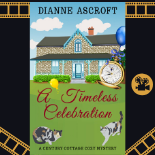




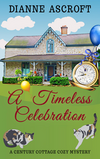


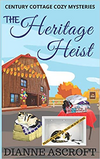
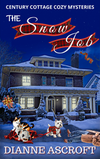
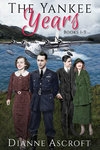

Sounds like a book I will like.
Pingback: Purls Before Swine Blog Tour – Rebecca McKinnon
Thanks so much for having me over to talk about writing process!